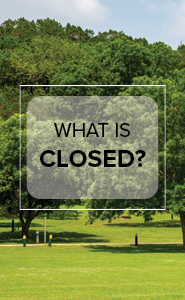To succeed, a community garden needs strong leaders and lots of support. When you apply for a garden permit, you’ll need to include a list of people helping run the garden. The permit requires committee members, dedicated gardeners, and garden leaders.
1. Pick 4 to 10 planning leaders and decide roles.
Community gardens do best with more than one leader. Leaders share the work required to plan, build, and maintain the garden. Leaders communicate with neighbors and may need to explain the need for a new community garden.
In most community gardens the leadership team includes:
- A treasurer
- An outreach coordinator
- A site coordinator
- A member coordinator
2. Create a generic “Evergreen” email for your garden, such as gardenname@gmail.com.
This helps you stay organized and makes things easier for future garden leaders.
3. Create a List of Interested Gardeners
You will need a minimum of 4 gardeners (not related or living in the same household), but 10 or more is encouraged to maintain the minimum of 4 gardeners. The address and contact information of committed gardeners will never be made public. Addresses are required to assess that there is a wide base of support and that the location of the garden serves the community.
Ways to get people interested in joining your garden include:
- Create social media accounts, a listserv, or both. Use the garden’s Evergreen email to create the social media accounts, do not use a personal email, to make it easier for future leaders
- Invite people you know to like or follow your social media pages.
- Ask neighborhood groups and community members to like or follow your pages and update them often.
- Advertise in neighborhood newspapers, community council newsletters, or bulletin boards.
- Put a sign on the lot announcing the future garden.
- Put up flyers in community centers or public places close by.
4. Find people to volunteer.
The process of installing a new garden and maintaining a garden long term will take many hours of physical labor. Tasking like mowing, weeding, composting, and mulching require ongoing maintenance. Talk to neighbors, business owners, and civic groups about volunteering in your garden regularly, such as:
- Daycare centers, schools, universities, and community colleges
- Garden groups such as Austin Organic Gardeners
- Neighborhood associations
- NextDoor and other social media platform groups
- Spiritual and faith-based communities
- Youth organizations (Boys and Girls Club, Scout troops, sports teams, outdoor education groups)
- Doctors' offices and clinics
These groups may be interested in assisting large projects, new construction, or weeding. Consider providing lunch, water, gloves, tools, and a first-aid kit when a community group volunteers. Always send a thank-you note afterward.
Create an account on the platform GivePulse and post volunteer events there. Use the garden’s Evergreen email to create the GivePulse account, do not use a personal email, to make it easier for future leaders.
Invite people of different ages and cultures. People get involved at different times for different reasons.



